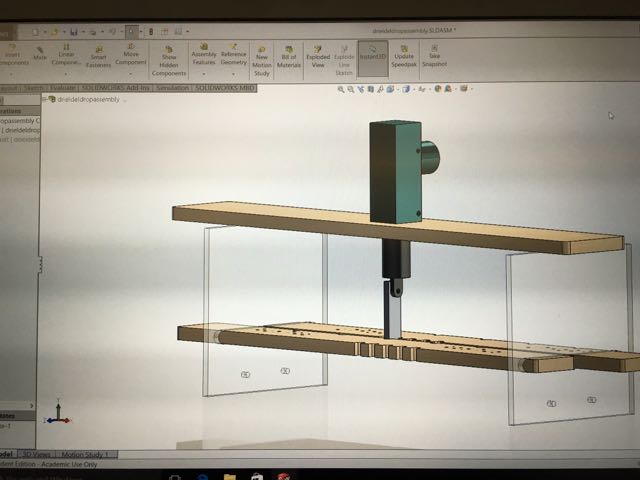
Week 17
Applications and Implications
The seventeenth assignment is to propose a final project that integrates the range of units covered:
What will it do?
Who's done what beforehand?
What materials and components will be required?
Where will they come from?
How much will it cost?
What parts and systems will be made?
What processes will be used?
What tasks need to be completed?
What questions need to be answered?
What is the schedule?
How will it be evaluated?
projects can be separate or joint, but need to show individual mastery of all of the skills
where possible, you should make rather than buy the parts of your project.

What will it do? The current design will spin a small number of driedels for the required 10 seconds by spinning the stems of the driedels by utilizing two spring loaded wooden rectangular pieces in opposing directions. The springs provide diagonal pressure to both grip and rotate the driedel stems when a 12V car door lock actuator pulls up a pin to release the two spring loaded boards.
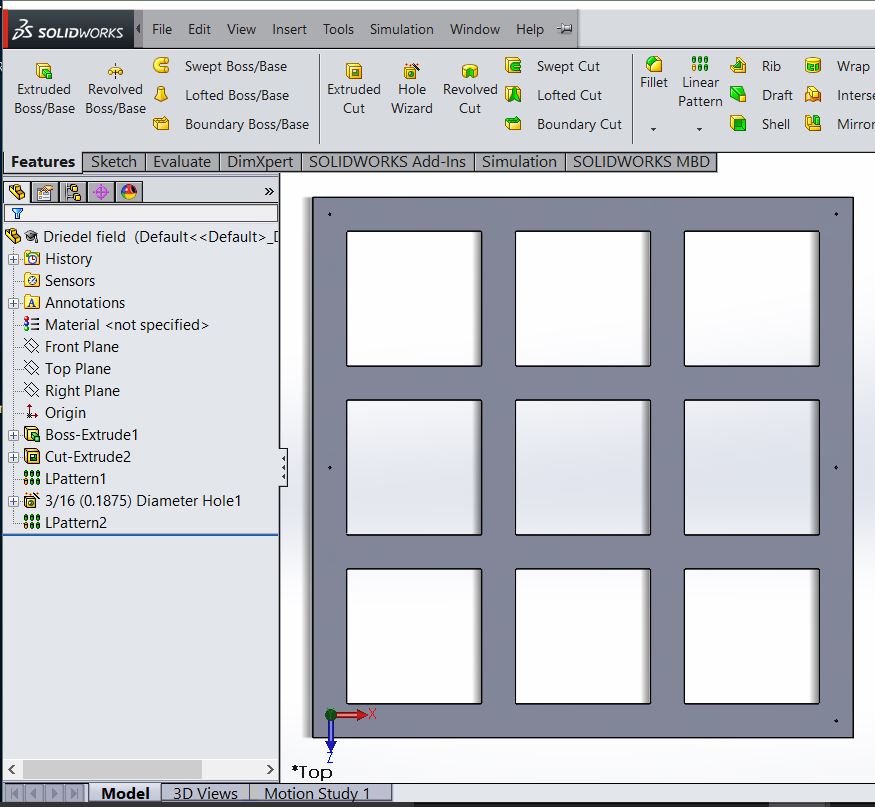
Solidworks design of a holder that will hold nine of the above devices. A node in a network of nodes will control droping devices shown above to drop driedels in each of the white squares. The holder is made of a 4 foot by 4 foot sheet of half inch plywood. In theory, one could make as many nodes as required to break the world record of 1200 simultanious driedels spinning for 10 seconds.
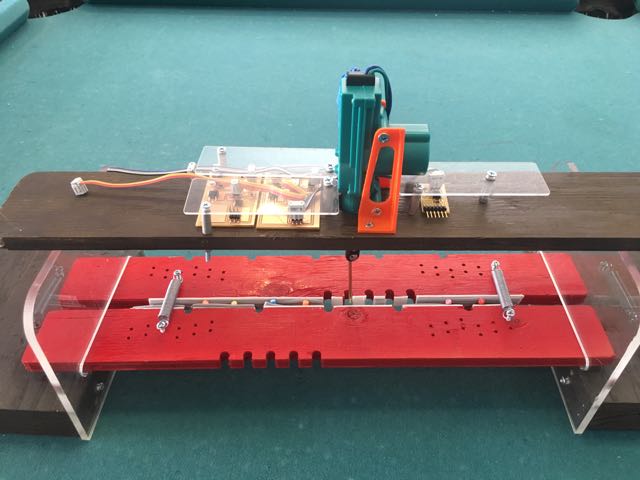
Both a Haas SR 100 router and the Shop Bot were used to make the horizontal red sliding boards and the brown horizontal board. The clear plastic bookends holder, the bridge and nodes are proteted by laser cut clear plastic. The green car door lock actuator is held in place with an orange 3D printed bracket designed in Inkscape. The bridge connecting a computer USB serial port to the node boards is a board I made from Neil's code in the networking lesson. The nodes are a combination of the nodes in the lesson and the sound board in the previous output lesson.
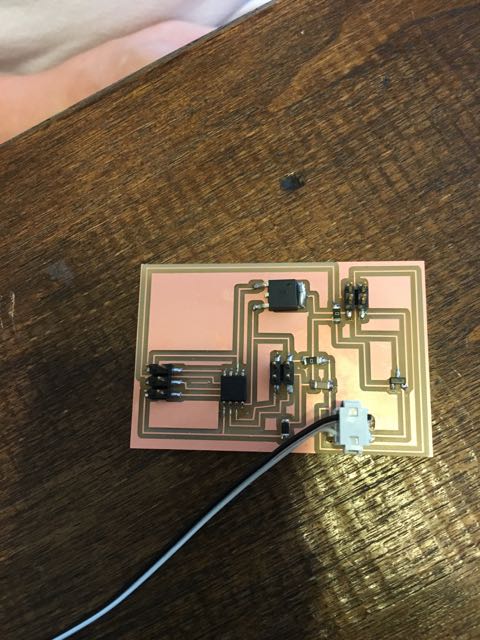
This is the modified combination of the node and sound board from previous lessons on networking and output (sound). Beyond the combination, the Mosfet is replaced with a larger current capacity and and external 12 V power input to drive the 12V door lock actuator.
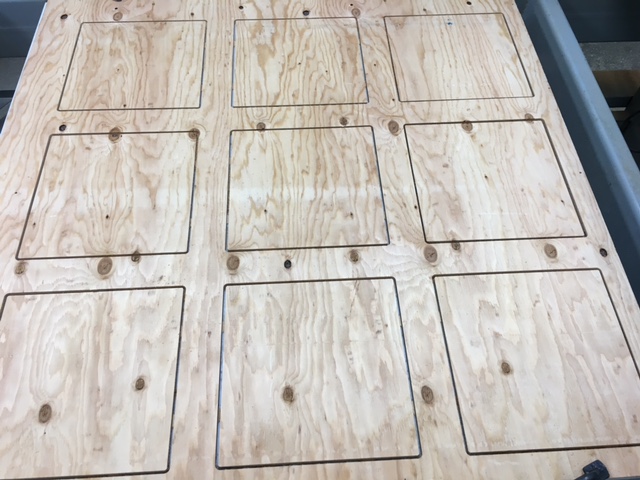
Dreidel droping grid cut using our Haas SR 100 CNC router.
Who's done what beforehand? I made the RS 232 network boards and the sound board prior to making and modifying the network nodes for this project. I used the same bridge in the project that Neil designed in the networking lesson and then modified the nodes to adapt to a needed larger current and needed 12V power supply. I also planned ahead and designed a large format Shop Bot/ Haas SR 100 router dreidel node holder before I build the dreidel actuator nodes.
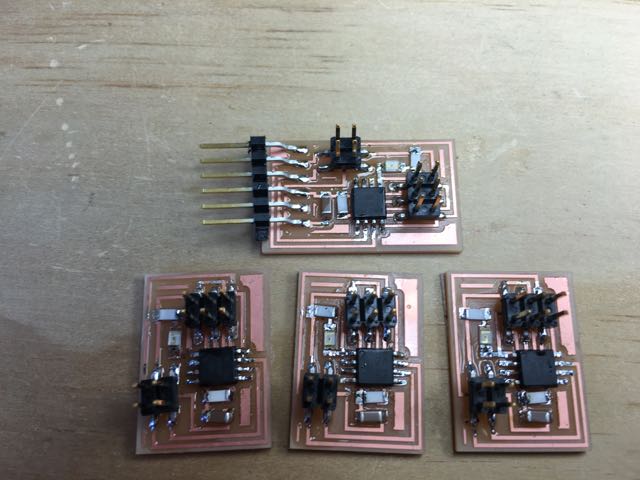
The pre modified network boards.
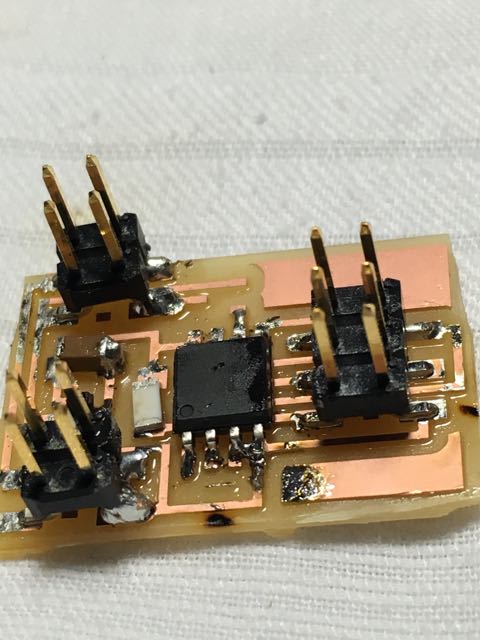
Pre-modified speaker board.
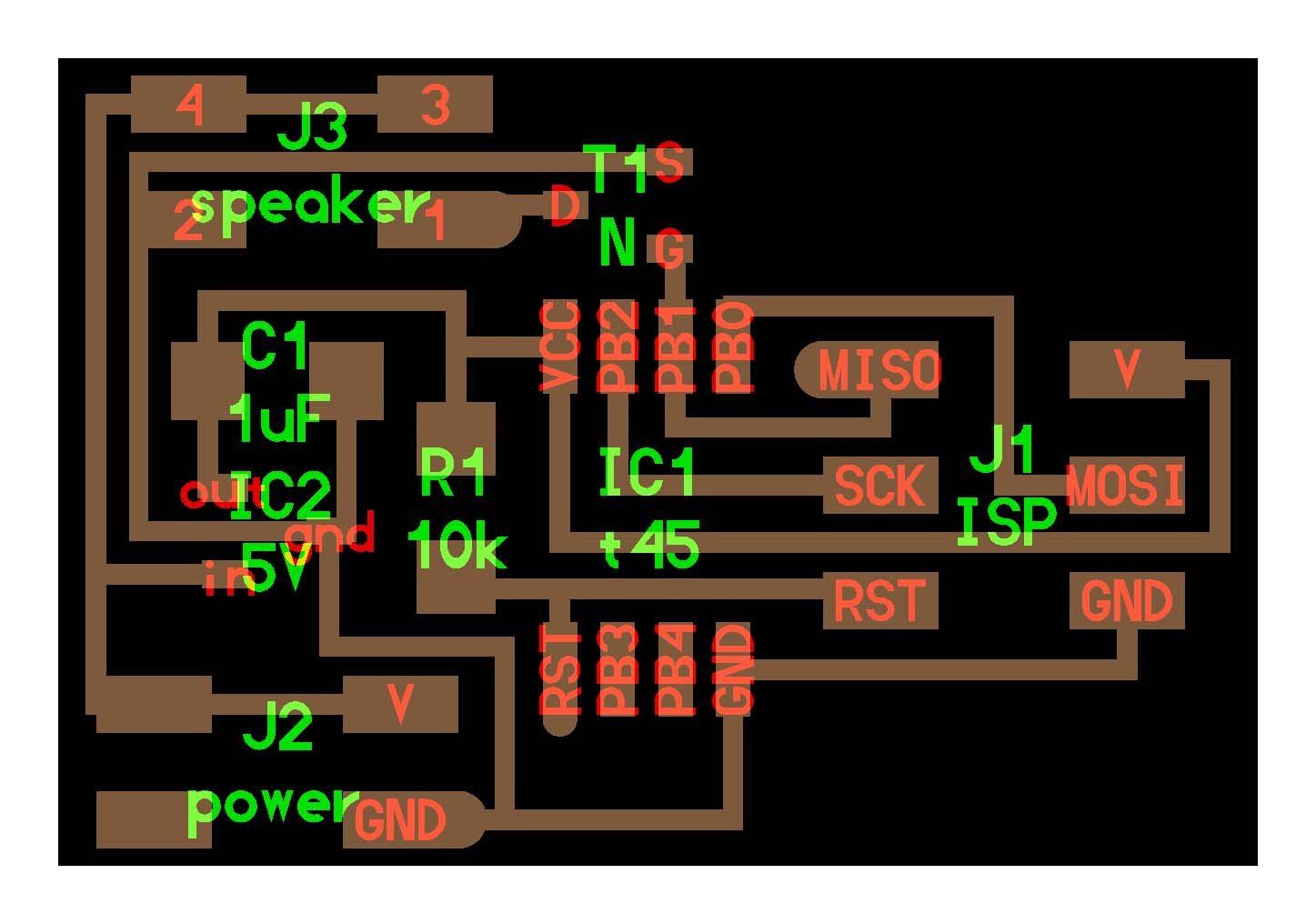
Unmodified speaker board.
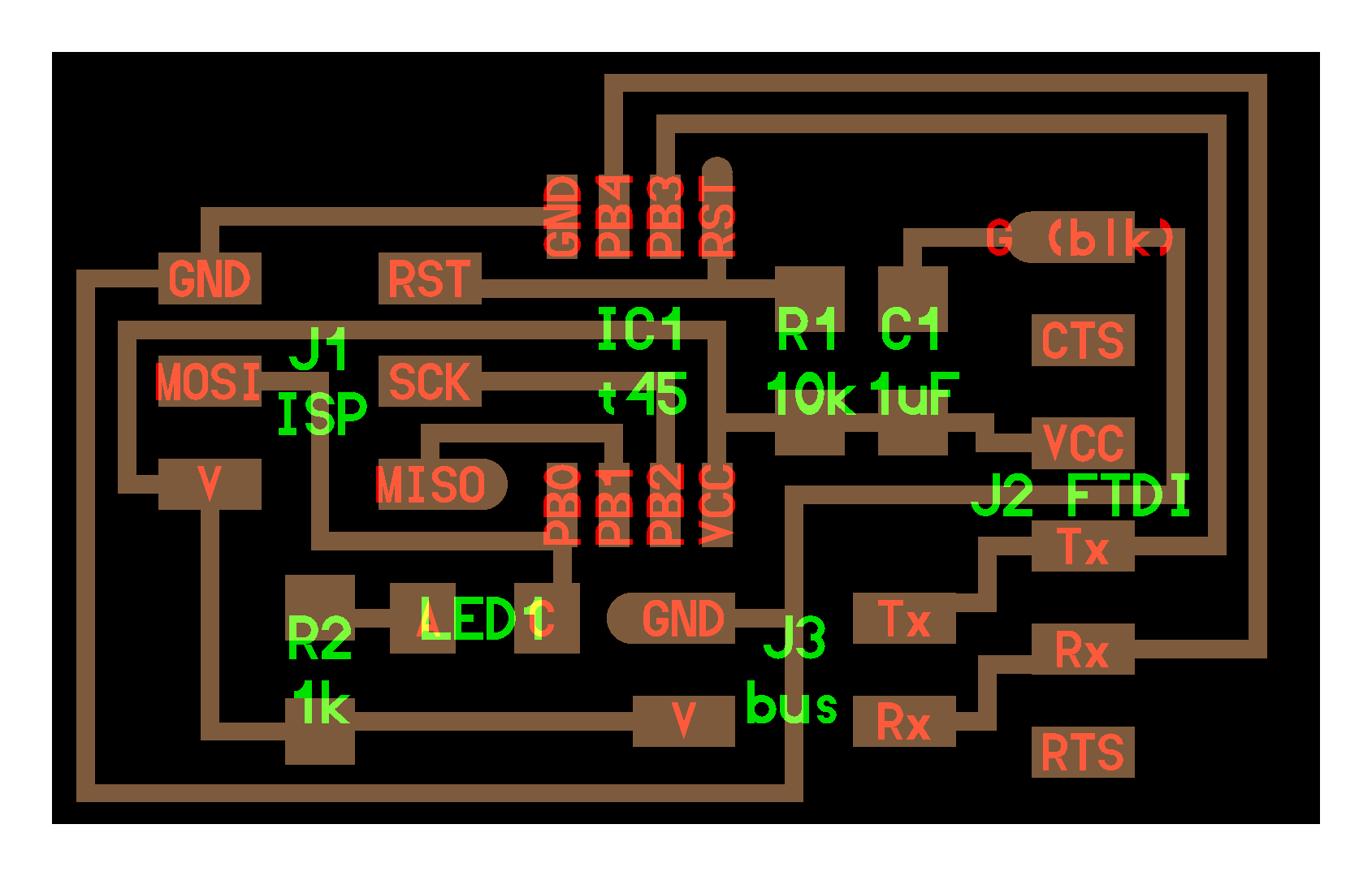
Unmodified bridge network board.
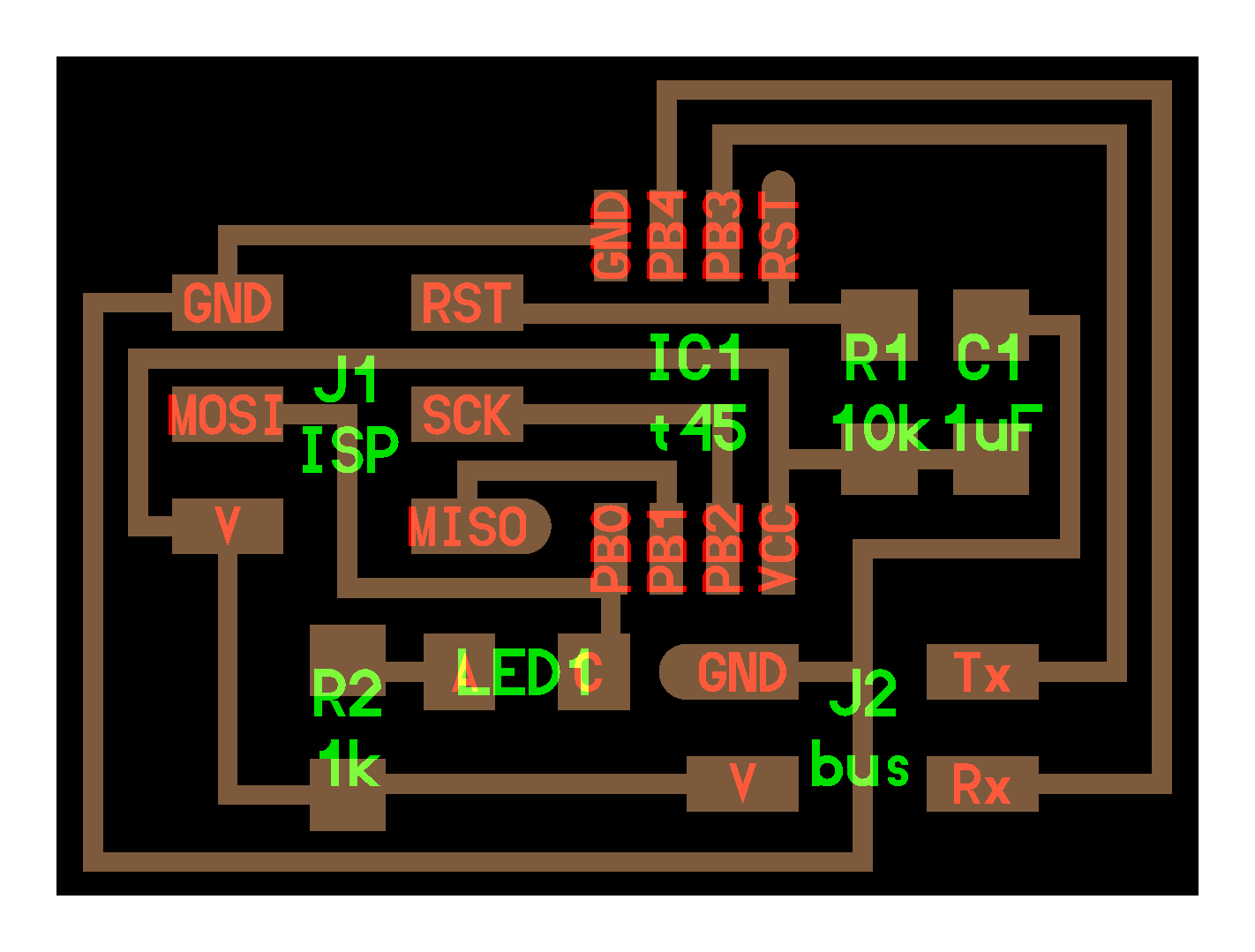
Unmodified node network board.
I
What will it do? I plan to make a series of networked driedel dropping devices so that they add up to 1200+ dreidels spining at one time for 10 seconds.
Who's done what beforehand? The dreidel spinning record was set by humans, but to my knowledge I'm the first to attempt to build a machine/device that will attempt to beat a thousand plus humans that were involved in the existing world record attempt. Of course I am buliding on the work of a lot of people who developed and programmed components that do the indivdual tasks involved.
What materials and components will be required?
Currently I am using cheap plywood to make most of the parts of the device, but I may go to HDPE for the final version. I am also using cheap springs, a network of PCB boards, the cheapest dreidels I can find online and a automobile power door lock from All Electronics. www.allelectronics.com
I Where will they come from? I picked up a sheet of 4x8 foot plywood from Home Depot $15.00, some springs and door lock motors from All Electronics and some cheap dreidels from Amazon.com.
How much will it cost?
$15 to $20 for a sheet of plywood, I might need four sheets to break the world record. $5.50 per door lock actuator (I might need six to ten of them to actually break the world record. The springs were 35 cents each. Maybe $10.00 total. Fab Inventory parts for components might be $50 for enough to break the record. My goal is actually to build a master-slave network of only two or three slaves to drop about 20-50 dreidels to take to Shenzen and then break the record at my school in December. I am thinking I will need a few hundred dollars to buy the 1200+ dreiedles and the above parts.
What parts and systems will be made?
Wooden or HDPE dreidel spinners, wooden dreidel field support, modified sound/network boards to actuate the door opener motors, support structure for dreidel dropping mechanism, electronic board enclosures. Everything will be made from the Fab Inventory except the car door actuators, the wood, the plastic dreidels, and the springs. The dreidels them selves could be made, but at 19 cents each, and I need over a thousand of then....I will purchase the dreidels. I do have future plans to mould and cast some dreidels to see if I can improve the performance and consistency.
What processes will be used?
CADing, programming, mechanical design, machine design, output devices, networking and commuications. cutting..laser and CNC router, electronics design, milling, surface soldering. I can likely include Vinyl cutting as well to make artistic text...potentially in Hebrew.
What tasks need to be completed?
I need to finish designing the modified network/sound boards and tweek the code for desired results. I also have some angular and linear momentum issues with the dreidels spinning. (they bump into each other and stop spinning prior to 10 seconds) The dreidels stems are not consistently round and they fall out of the holder when I load over two or three of them. The dreidels "walk" and bump into each other. I may mill some small divots similar to wells in a microscale chemistry lab so they don't "walk" out of the well. Also it has been difficult to get all of the dreidels perpendicular to the surface. This causes the dreidels to bump into each other.
What questions need to be answered? Will they spin long enough? Will the actuator (door lock) have sufficeient strengh to actuate the driedle dropping mechanism? Can I get the coding right? Will the number of amps drawn be too large for the Mosfet or other elements of the circuit?
What is the schedule?
Our lab in Bakersfield presented on June 20th. I would say the nearly all of the problems have been solved to some extent. The actuator pulls and releases the dreidels. Two or three dreidels spin for the needed 10 seconds. I would like to continue to modify so that I can get a larger number of dreidels to spin per node. I would like to get this done by December and do an all school assembly to break the world record...if not, there is always next December.
How will it be evaluated?
I hope to show that I have learned how to do many of the processes taught in this course. For me the evaluation is in the learning and what I will be able to teach my students and staff when we open a Fab Lab in my school in September. My goal was to learn and I have learned a great deal. I wanted to build something cheap and fun for students. I wanted to do something fun and not so complex that my staff and students would think it is beyond their capability. I am a physics teacher and wanted to build something that I could use to show many concepts of physics, electronics, and illustrate the spiral learning of the design process. In my mind, I have succeeded in doing all of those things, but there is much more to learn and I look forward to students and other teachers getting involved in improving this design and helping others with their own innovative projects.
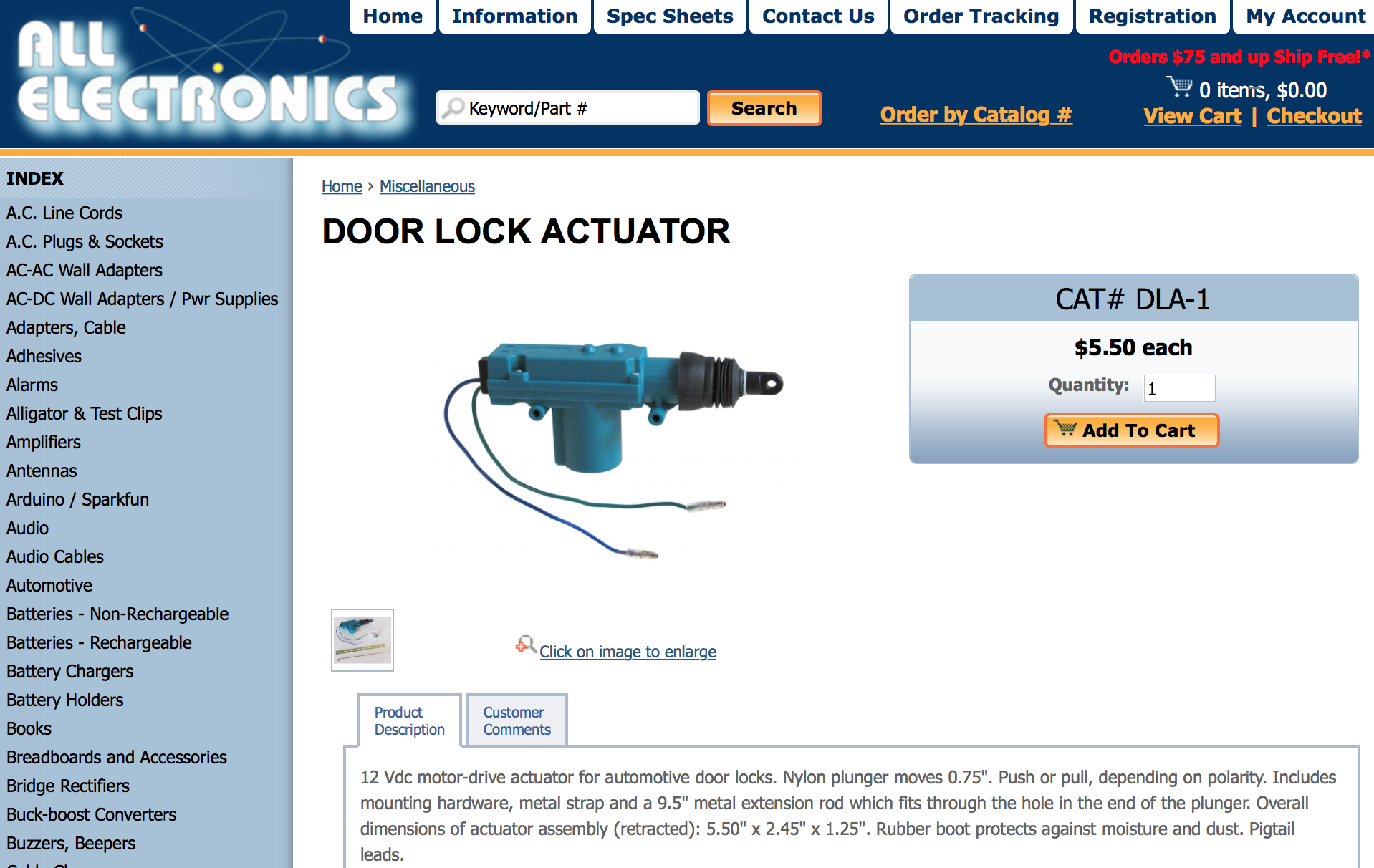
Car door lock actuator from All Electronics.com
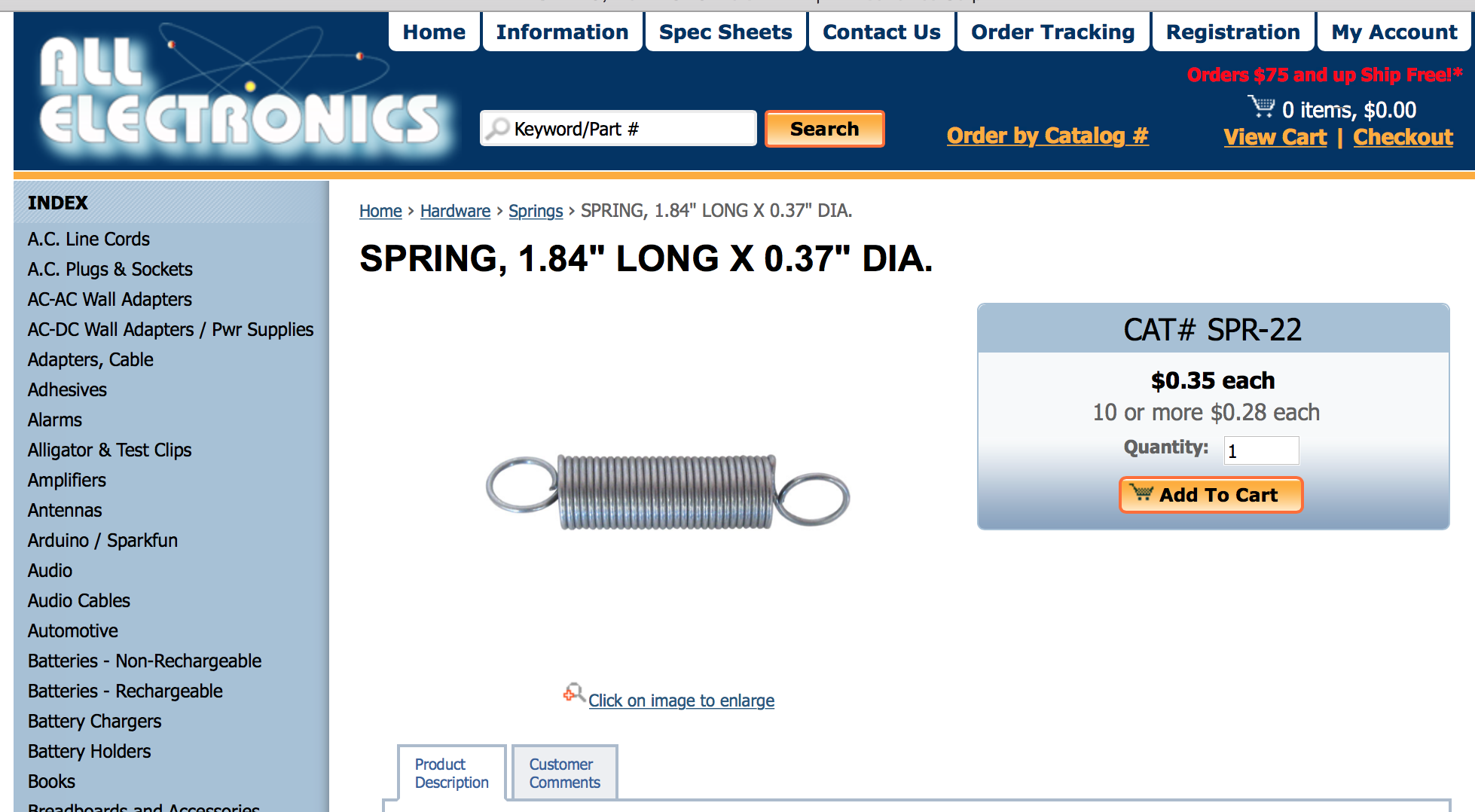
Springs from All Electronics.com

Half inch plywood from Home Depot

Dreidels ordered from Amazon (19 cents each)